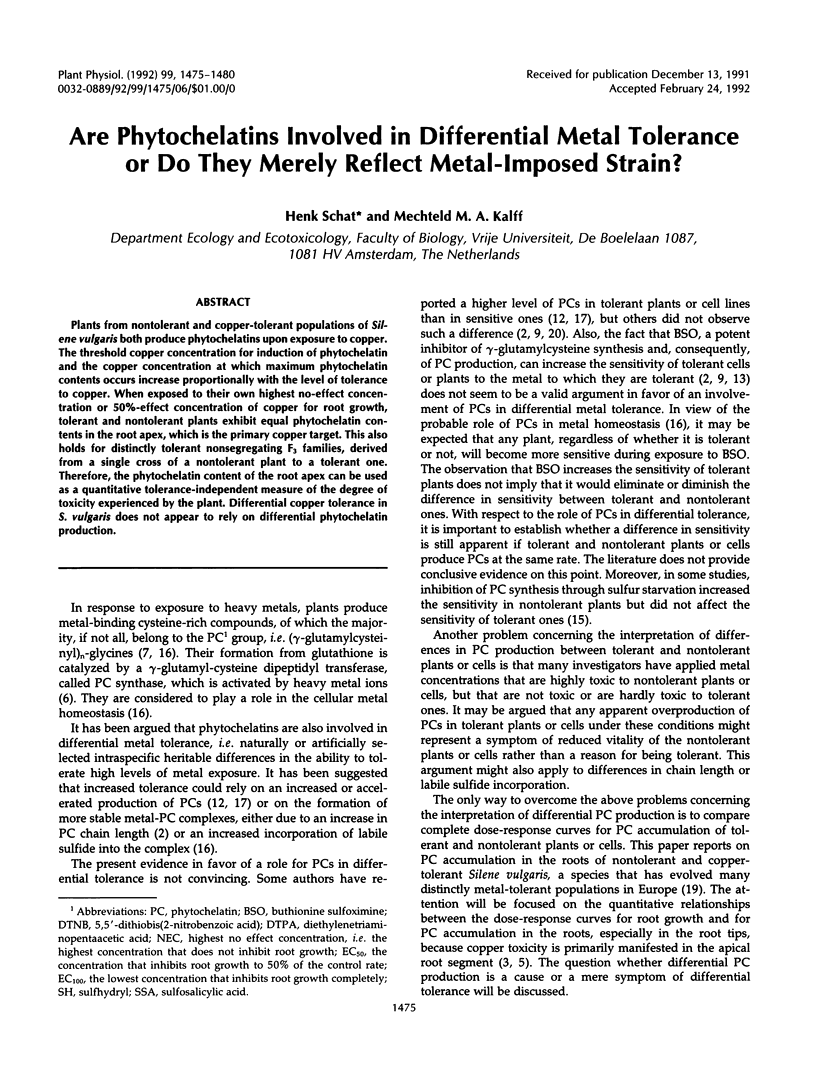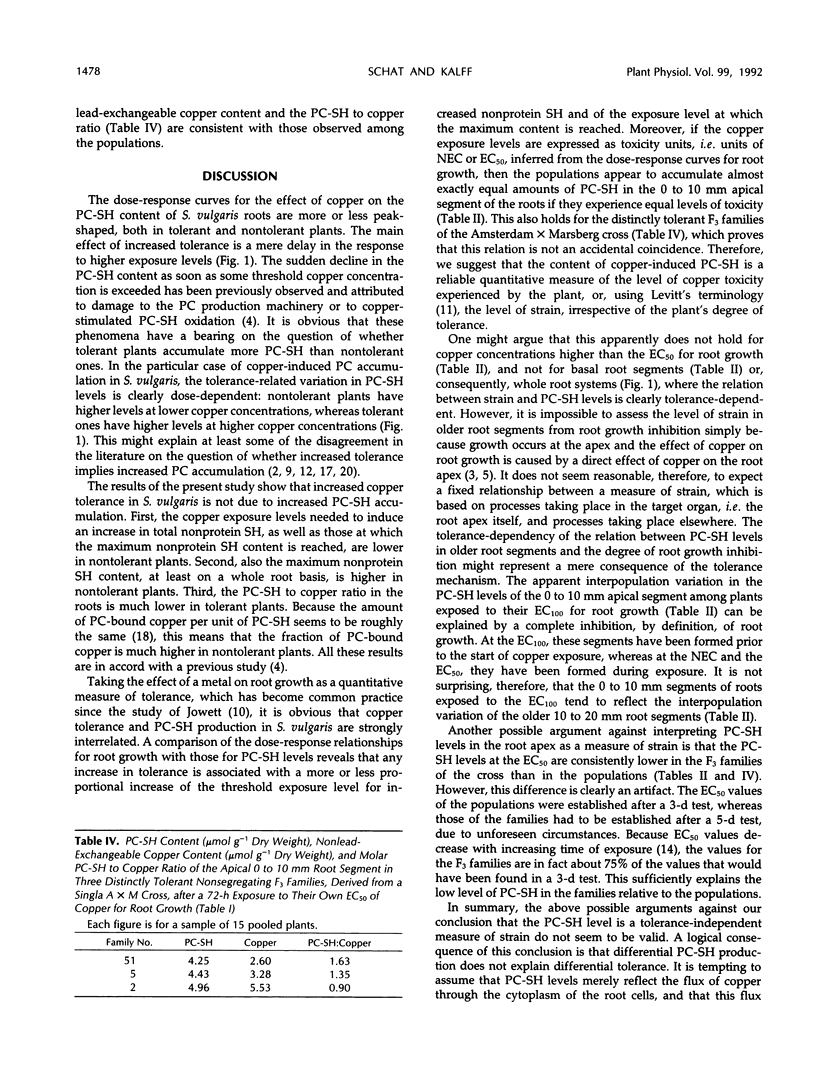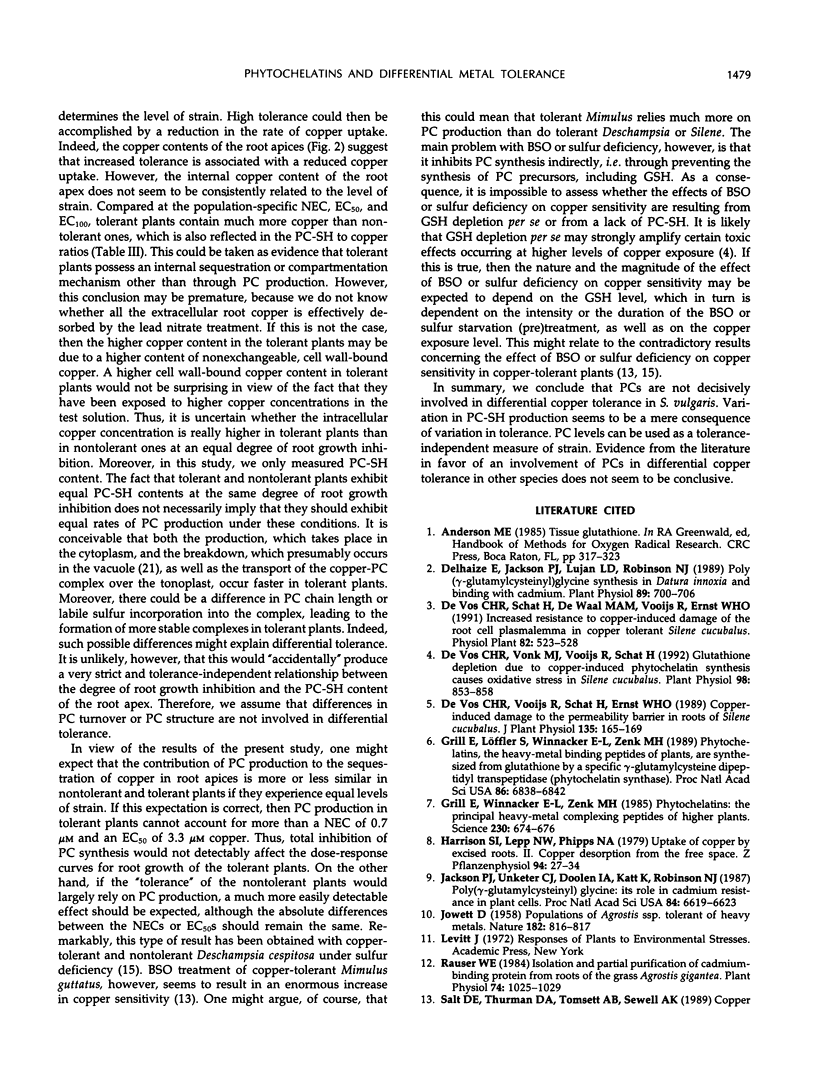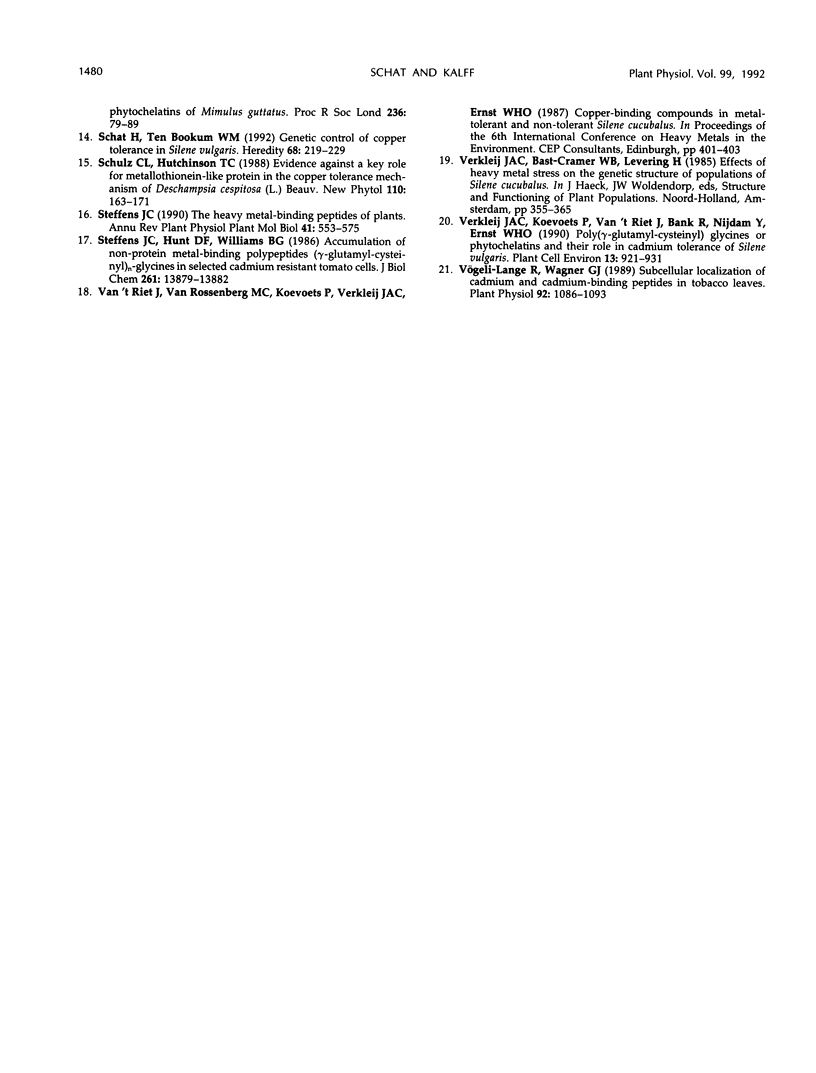Abstract
Plants from nontolerant and copper-tolerant populations of Silene vulgaris both produce phytochelatins upon exposure to copper. The threshold copper concentration for induction of phytochelatin and the copper concentration at which maximum phytochelatin contents occurs increase proportionally with the level of tolerance to copper. When exposed to their own highest no-effect concentration or 50%-effect concentration of copper for root growth, tolerant and nontolerant plants exhibit equal phytochelatin contents in the root apex, which is the primary copper target. This also holds for distinctly tolerant nonsegregating F3 families, derived from a single cross of a nontolerant plant to a tolerant one. Therefore, the phytochelatin content of the root apex can be used as a quantitative tolerance-independent measure of the degree of toxicity experienced by the plant. Differential copper tolerance in S. vulgaris does not appear to rely on differential phytochelatin production.
Full text
PDF





Selected References
These references are in PubMed. This may not be the complete list of references from this article.
- De Vos C. H., Vonk M. J., Vooijs R., Schat H. Glutathione Depletion Due to Copper-Induced Phytochelatin Synthesis Causes Oxidative Stress in Silene cucubalus. Plant Physiol. 1992 Mar;98(3):853–858. doi: 10.1104/pp.98.3.853. [DOI] [PMC free article] [PubMed] [Google Scholar]
- Delhaize E., Jackson P. J., Lujan L. D., Robinson N. J. Poly(gamma-glutamylcysteinyl)glycine Synthesis in Datura innoxia and Binding with Cadmium : Role in Cadmium Tolerance. Plant Physiol. 1989 Feb;89(2):700–706. doi: 10.1104/pp.89.2.700. [DOI] [PMC free article] [PubMed] [Google Scholar]
- Grill E., Löffler S., Winnacker E. L., Zenk M. H. Phytochelatins, the heavy-metal-binding peptides of plants, are synthesized from glutathione by a specific gamma-glutamylcysteine dipeptidyl transpeptidase (phytochelatin synthase). Proc Natl Acad Sci U S A. 1989 Sep;86(18):6838–6842. doi: 10.1073/pnas.86.18.6838. [DOI] [PMC free article] [PubMed] [Google Scholar]
- Grill E., Winnacker E. L., Zenk M. H. Phytochelatins: the principal heavy-metal complexing peptides of higher plants. Science. 1985 Nov 8;230(4726):674–676. doi: 10.1126/science.230.4726.674. [DOI] [PubMed] [Google Scholar]
- Jackson P. J., Unkefer C. J., Doolen J. A., Watt K., Robinson N. J. Poly(gamma-glutamylcysteinyl)glycine: its role in cadmium resistance in plant cells. Proc Natl Acad Sci U S A. 1987 Oct;84(19):6619–6623. doi: 10.1073/pnas.84.19.6619. [DOI] [PMC free article] [PubMed] [Google Scholar]
- Rauser W. E. Isolation and Partial Purification of Cadmium-Binding Protein from Roots of the Grass Agrostis gigantea. Plant Physiol. 1984 Apr;74(4):1025–1029. doi: 10.1104/pp.74.4.1025. [DOI] [PMC free article] [PubMed] [Google Scholar]
- Steffens J. C., Hunt D. F., Williams B. G. Accumulation of non-protein metal-binding polypeptides (gamma-glutamyl-cysteinyl)n-glycine in selected cadmium-resistant tomato cells. J Biol Chem. 1986 Oct 25;261(30):13879–13882. [PubMed] [Google Scholar]
- Vögeli-Lange R., Wagner G. J. Subcellular localization of cadmium and cadmium-binding peptides in tobacco leaves : implication of a transport function for cadmium-binding peptides. Plant Physiol. 1990 Apr;92(4):1086–1093. doi: 10.1104/pp.92.4.1086. [DOI] [PMC free article] [PubMed] [Google Scholar]


